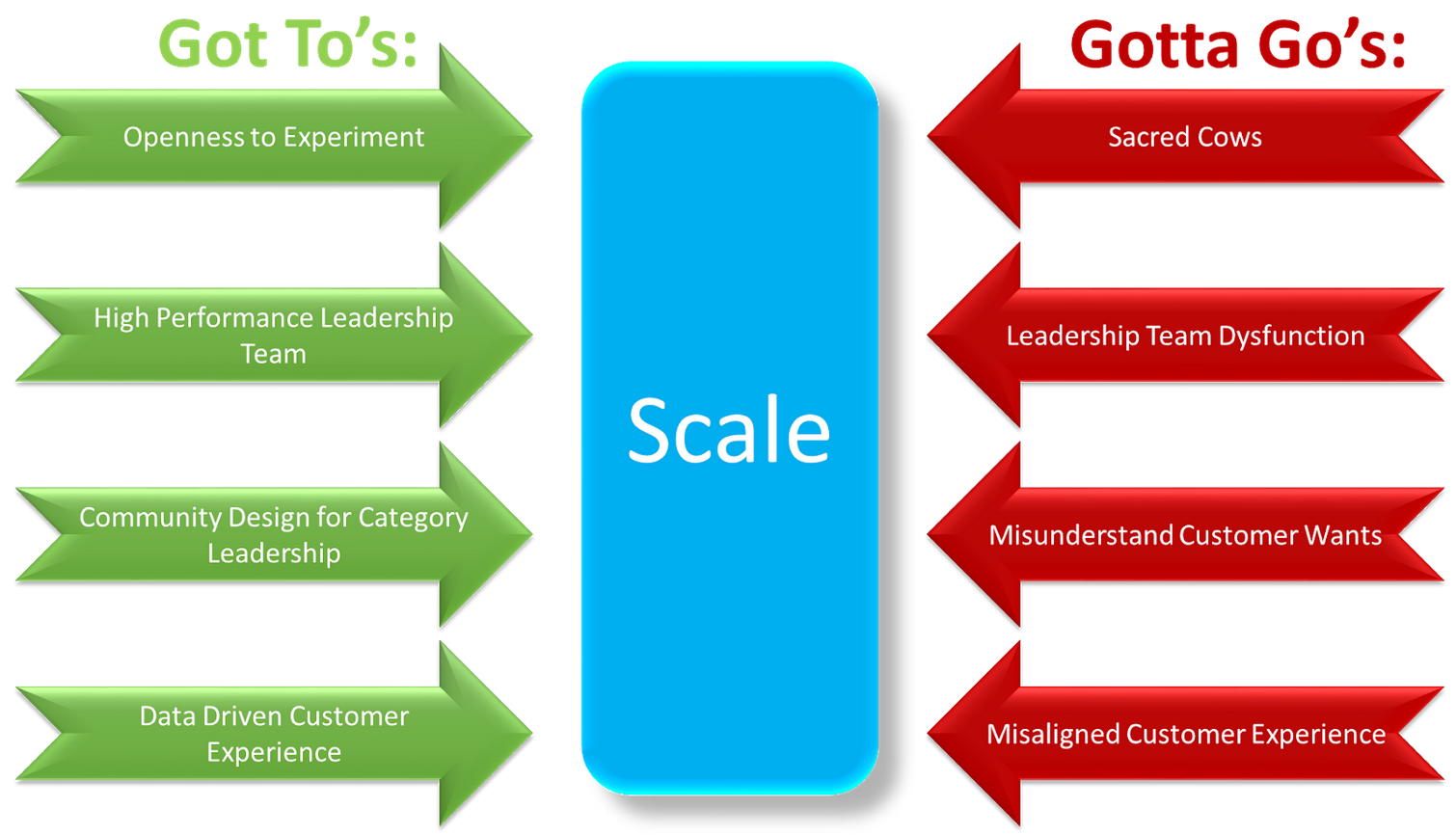We field calls on a regular basis from ambitious company leaders that are frustrated by the valuation that they are getting for their business. These leaders are committed to increasing the value of the business by improving the quality of their earnings and increasing the multiplier that growth delivers.
We field calls on a regular basis from ambitious company leaders that are frustrated by the valuation that they are getting for their business. These leaders are committed to increasing the value of the business by improving the quality of their earnings and increasing the multiplier that growth delivers.
They have a clear focus on what they want to achieve…but how to do it keeps them up at night.
After getting a clear understanding of their assessment of the situation, and then sharing how SmartScale℠ works, these battle-hardened pros prove their acumen with a simple question – what are the obstacles that would prevent SmartScale℠ from working for them?
At the risk of being masters of the obvious we unveil this chart:

Got to’s and Gotta Go’s for scale
We don’t jump into an explanation. We allow the pregnant pause. The silence is usually interrupted with something like, “So you guys have a process that moves us from red to green – while setting us up to scale…and I know we have some long-standing issues in each of the red arrows that I’ve ignored.”
Those “long-standing issues” may be sources of resistance to change.
As leaders, we learn to pick our battles based on the priorities that face us. When the decision is made to make scale priority behaviors and rituals which had little or no impact on the achievement of the legacy priorities are now barriers to forward progress.
A protocol is a predefined written procedural method in the design and implementation of processes. Protocols are written whenever it is desirable to standardize a method to ensure successful replication of results by others. Detailed protocols also facilitate the assessment of results through data-driven control systems. In addition to detailed procedures and lists of required equipment and instruments, protocols often include information on safety precautions, the calculation of results, and reporting standards, including statistical analysis and rules for predefining and documenting excluded data to avoid bias. Protocols are employed in a wide range of operating environments, from social science to quantum mechanics. Written protocols are also employed in business to ensure consistent quality.
The beauty of the SmartScale℠ protocol is that we can speak to it (as opposed to the legacy behaviors and rituals) – using the tested, repeatable and reliable protocol to surface and resolve barriers to scale. This works beautifully as long as sacred cows are respectfully recognized and vetted against options. By vetted we mean using unbiased, measured experiments as the standard for decision making. Sounds logical and simple – right? For a high-performance leadership team, it is. More on that in a minute.
If a person, product, process, or idea is so highly respected (or feared) that it feels wrong (or unsafe) to criticize, you can call it a sacred cow.
When we are SmartScaling we have to be able to question everything, challenge assumptions, bring in new data and facts, adopt protocols, and develop new innovative thinking. If individuals hold on to the past or inhibit the discussion on what really is important for the future versus what worked in the past, then transformation may not be possible. In our experience honoring (or turning a blind eye) to sacred cows is an indication of leadership team dysfunction.
Team dysfunction is an over-arching reason that companies can’t scale – but before we can talk to the team issues, we need to confirm that there is a bedrock of critical skills that high performing team members must possess. These fall into four categories:

Assuming the leadership team exhibits these core skills, the leadership team dysfunctions that prevent a company from achieving scale are:
No clear vision. Executive teams need to be focused on a shared vision that includes clearly defined values, priorities, milestones, and metrics.
Values misalignment. The shared values of an organization emanate from the behavior of the leaders and permeate the culture of the business through the methods, processes and measures that the organization uses.
Role conflict. Team members need clear roles with measurable outcomes, properly aligned incentives, and unbiased measures.
Lack of trust. Trust is the foundation of any successful team. No trust, no team.
Lack of honest feedback. A team that does not ‘tell it like it is’ will lead to the company’s demise.
Toxic behaviors and team chemistry. Team members should be expected to bring their best thinking and behaviors, with the intent of creating better thinking and behaviors through their interaction with one another. Anything less than that should be unacceptable.
Lack of fairness and consistency. Bending the rules, or showing favoritism only creates distrust, dissension, and resentment within an executive team, and destroys its sense of community and common goals.
To SmartScale℠ a company must have direct knowledge of the customer and deep insight into the customer. Research tells us that organizations that leverage customer behavioral insights outperform peers by 85 percent in sales growth and more than 25 percent in gross margin. Most mid-life companies are capitalizing on only a fraction of the data they’ve collected – or worse yet, are not collecting the data they need. Legacy systems, spotty automation, and isolated databases are common obstacles. Models and dashboards, if they exist, maybe using stale data, and essential processes may be handicapped by manual interaction.
We frame direct knowledge of and deep insight into the customer in terms of the job the customer hires you to do, where the customer’s experience with your company takes them from and delivers them to, and what wants (Power, Achievement, or Affiliation) this process resolves. We combine subjective and objective analysis techniques to deliver a data-driven intelligence system for identifying, inspiring, and addressing customer wants in a specific sequence in order to achieve category leadership and transform the audience into a community.
Sixty-eight percent of marketing leaders (and 86% of top performers) agree that they increasingly compete on customer experience. They recognize that the customer journey does not fit into linear categories we can neatly label “web,” “social,” “email,” and so on. Sixty-seven percent of marketing leaders say creating a connected customer journey across all touchpoints and channels is critical to their success.
Companies that really get it know that customer experience goes beyond marketing. They realign their operational structure so that different teams are working together to put the customer first. This means that sales, marketing, operations, and customer service share common goals, data, and processes.
Building on Customer Wants the alignment of the customer experience is built on:
Physical: Deals with the look & feel of your operation. These are the physical elements that are encountered in person, whether online, on location, or via phone.
Functional: The ease of doing business with the company – learning about the products and services, purchase process, return policies, hours of operations, and other factors.
Technical: The staff’s level of expertise and skills when it comes to the company’s systems, equipment, product, and job knowledge.
Operational: Actions that team members must execute before, during, and after a customer interaction.
Experiential: Building on Physical, Functional, Technical, and Operational components of the Customer Experience – this is what makes the customer say “WOW!” The customer is delighted, and maybe even surprised. Experiential actions are the reason why customers return, refer others, and become brand evangelists.
We built the SmartScale℠ Process so that the company leadership and our team, working shoulder-to-shoulder, can identify the foundations upon which SmartScale℠will work for the individual company, surface the barriers to successfully achieving scale, and mutually deciding if SmartScaling is right for the business. That’s the outcome of the two day SmartScale℠ Lab.
If you want more information contact us here: hello@scalewerks.co or scroll down and subscribe to our ScaleWerksTM Mastermind email community and join the conversation.
